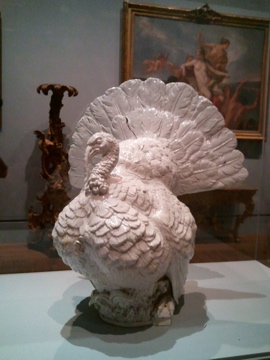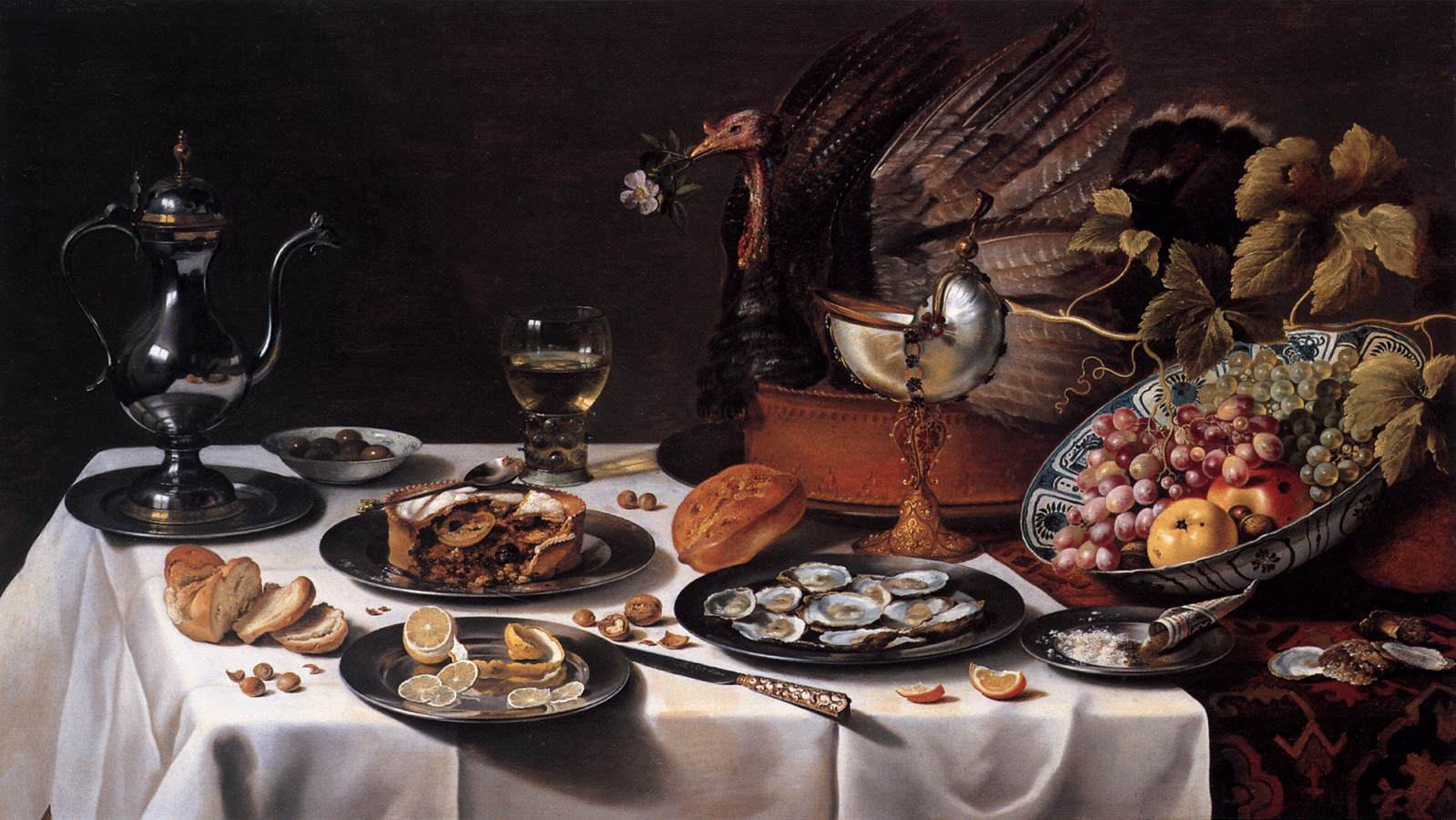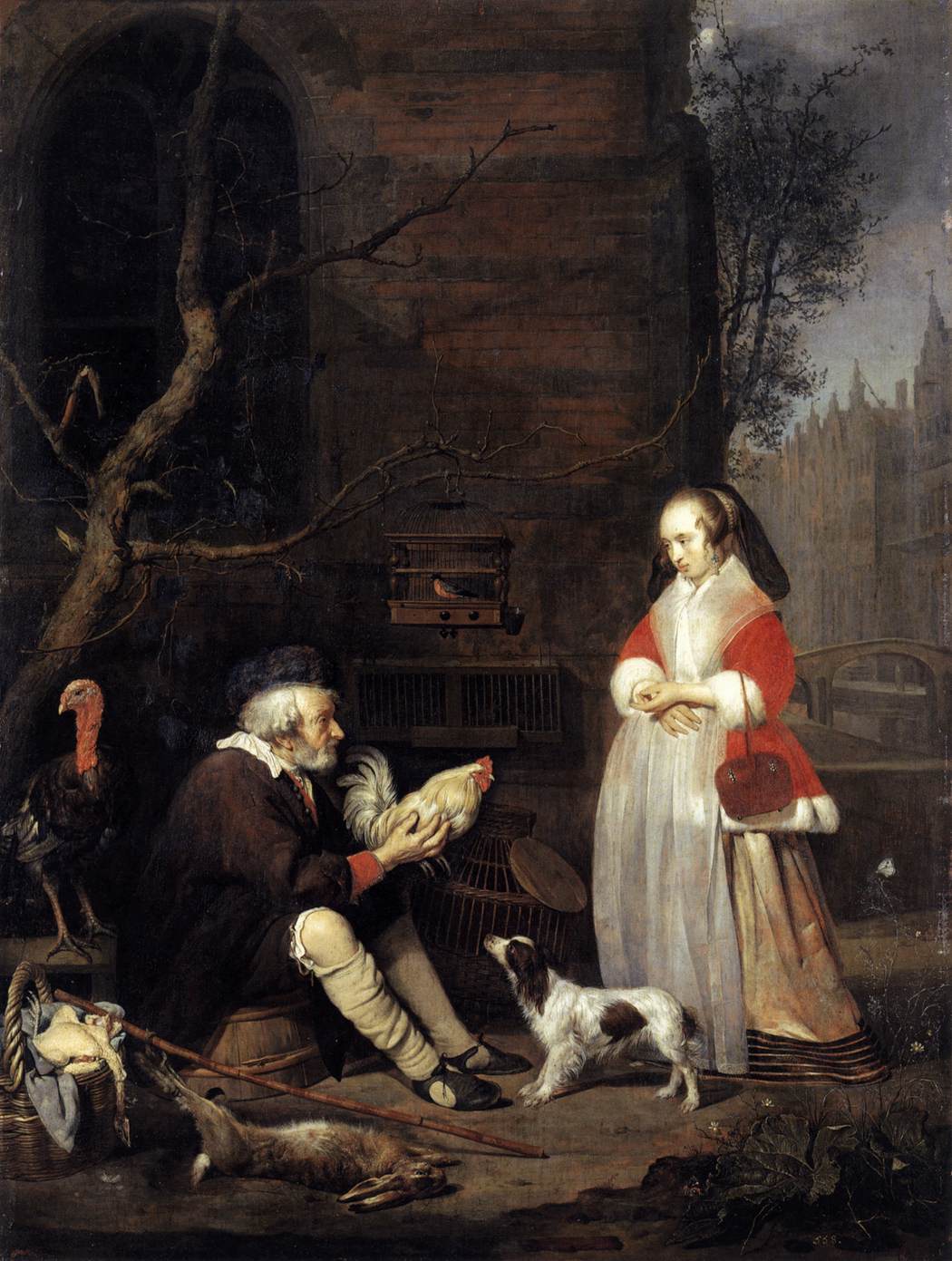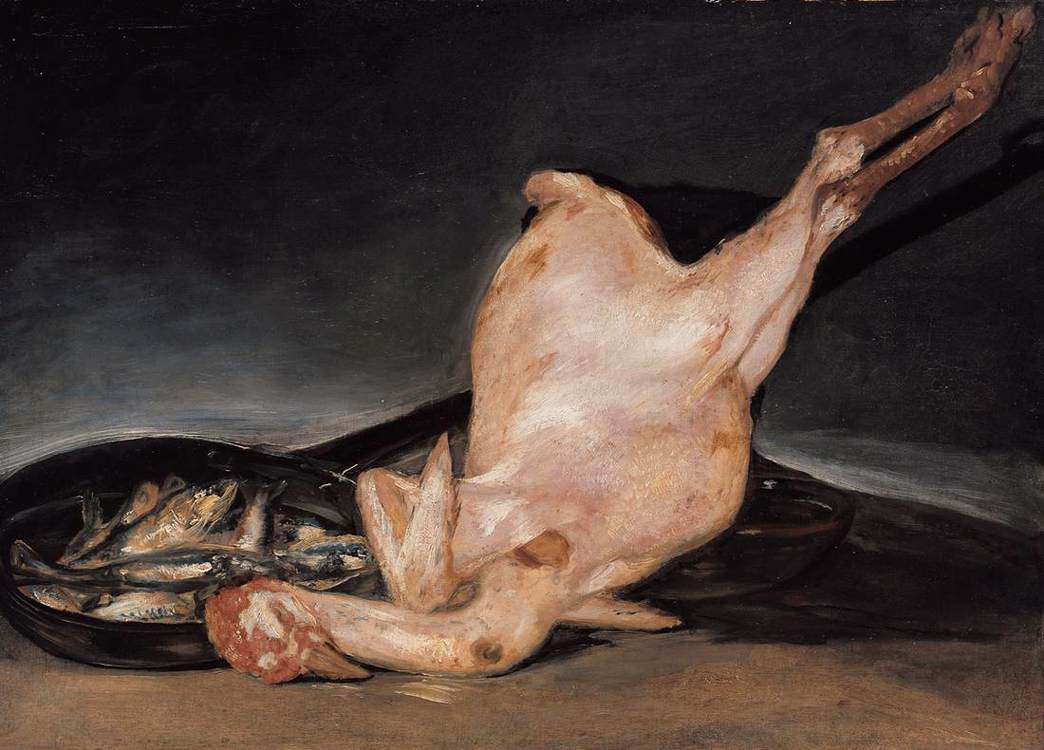Thursday, November 24th, 2011
The Turkey in Art
Happy Thanksgiving! This morning I’ve been wondering a little about the history of the turkey bird and its representation in art. I’ve learned a couple of interesting things, particularly from the book More than a Meal: The Turkey in History, Myth, Ritual and Reality by Karen Davis. This book not only discusses the history of the turkey in connection with the Thanksgiving holiday, but also a broader history (and consumption) of the bird. The turkey was first shipped to Europe from Mexico in the early 16th century. The turkey was then bred in Europe (Davis specifically mentions Renaissance England) and eventually the domesticated bird was brought back over to the Americas.1
I think it’s pretty safe to say, then, that the turkey was viewed by Europeans as an “exotic” bird, at least initially. As I’ve been looking at some representations of turkeys this morning (all by European artists), I can’t help but wonder which of this artists might have viewed the turkey in an “exoticized” light, and which (later) artists may have seen the turkey as an integrated part of European life.
Here are some of my favorite turkeys in art:

Johann Joachim Kändler, Turkey model, c. 1733. Getty Museum. This turkey was one of eight models which were made by the Meissen manufactory. Kändler, a sculptor, was hired to help with the royal commission for large porcelain animals.

Michiel van der Voort the Elder, detail of pulpit, 1713, Cathedral of Our Lady (O.-L. Vrouwekathedraal), Antwerp
The turkey depicted on this pulpit is found on the left side of the image, halfway up the staircase. Its distinct tail feathers are especially noticeable. In addition to the turkey, this pulpit shows a variety of other birds, including a parrot, heron, owl, and peacock. These birds are included to emphasize the natural world, which was thought by Saint Bernard to be a source of inspiration for the faithful. (I bet this is the only instance in which the turkey bird serves as a point of spiritual inspiration!) I’d love to research more about this pulpit (if anyone has any sources to recommend, please leave a comment!). So far I have only found a few sources online: the Web Gallery of Art and this online forum. You can see another detail image of the pulpit here.
Do you have any favorite depictions of turkeys? Happy Thanksgiving!
1 Karen Davis, “More than a Meal: The Turkey in History, Myth, Ritual and Reality” (Brooklyn, New York: Lantern Books, 2001), p. 54. Citation available online here. Davis’ book also goes into some depth discussing the difference between the wild turkey and domesticated turkey (see, for example, p. 79). She also mentions that the turkey was not a widespread part of Thanksgiving meals (outside of New England) until after 1800 (see p. 53).




Who knew Goya painted a turkey?! Not me. 🙂
Hi M! I always like how this bird got its name due to its resemblance with another bird that was primarily exported from Turkey, the guinea-fowl sometimes called the ‘Turkey-hen’
In Turkish folklore, there is recurrent depiction of Turkeys, often in Tapestries hung in the home – I recall several relatives with them in the wall! In Turkish, as in English, I think there has been some crossover between our descriptions of the the guinea-fowl and their source locations – we actually call them “Hindi” – which means “of India”
Kind Regards
H
No thoughts on turkeys in art, but a couple of notes regarding that pulpit:
For all I know, the definitive (and probably the only) book on Baroque pulpits in Belgium is: Paul Fierens, Chaires et Confessionnaux Baroques, Brussels 1943.
Personally, what the pulpit in Antwerp reminds me of is the pulpit in Brussels Cathedral (plenty of images online if you google Brussels Cathedral Pulpit). The iconographic theme is a rather different one (The Expulsion of Adam and Eve from Paradise) but the overall structure is strikingly similar and the sculptor turned the whole thing into a representation of the Garden of Eden creating an “overgrown” effect not unlike what we find in Antwerp. There actually is a (rather old) article dealing with this kind of pulpit, i.e. Alice Strobl, Die Naturkanzeln des 18. Jahrhunderts, in: Alte und neue Kunst 4, 1955, pp. 38-52.
As this is not really my area of expertise, I’ve got no idea whether anything has been written on the subject more recently, so I’ll conclude this by saying that if you’re interested in Strobl’s article but encounter problems finding it in your corner of the world, don’t hesitate to drop me a line – I can easily provide you with a copy…
Thanks for the comments!
H, that is very interesting about turkeys being called “Hindi.” Wow, that bird has been privy to a lot of misleading names!
Historien errant: Thanks for the recommendations! I’ll see if I can find a copy of the Strobl article around here. (It looks like I’ll need to dust off my German reading skills in order to read it – gulp!)
I actually saw images of the Brussels Cathedral pulpit when I was researching more information about the Antwerp pulpit. I’ll have to research it more, especially since you’ve brought up this interesting idea about the “overgrown” effect. I noticed that Verbrugghen created his pulpit in Brussels between 1696 and 1699. It seems very likely that Voort (who made the Antwerp pulpit) may have gotten his inspiration from this earlier pulpit.